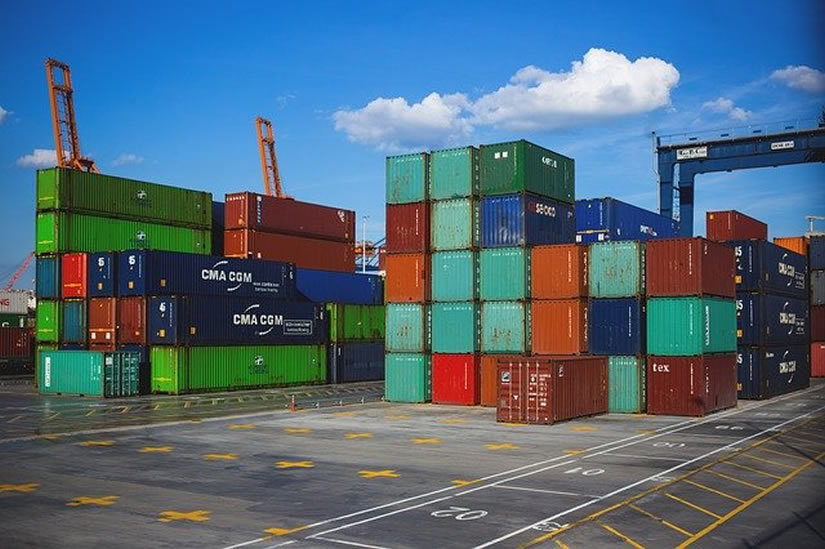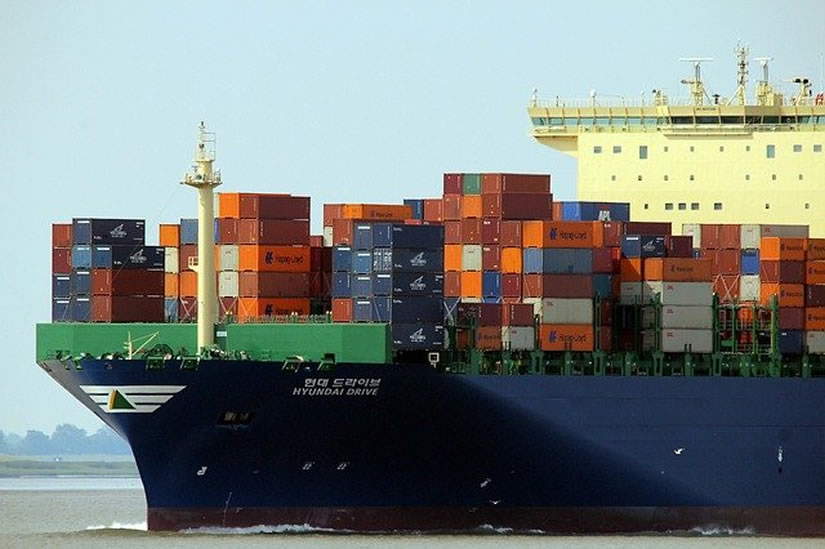By Elsabe Loots, University of Pretoria
– Over the past 25 years there has been lots of research and debate about the concept, the history and state of globalisation, its various dimensions and benefits.
The World Economic Forum has set out the case that the world has experienced four waves of globalisation. In a 2019 publication it summarised them as follows.
The first wave is seen as the period since the late 19th century, boosted by the industrial revolution associated with the improvements in transportation and communication, and ended in 1914. The second wave commenced after WW2 in 1945 and ended in 1989. The third commenced with the fall of the Berlin Wall in 1989 and the disbanding of the former Soviet Union in 1991, and ended with the global financial crises in 2008.
The fourth wave kicked off in 2010 with the recovery of the impact of the global financial crises, the rising of the digital economy, artificial intelligence and, among others, the increasing role of China as a global powerhouse.
More recent debates on the topic focus on whether the world is now experiencing a retraction from the fourth wave and whether it is ready for the take-off of the fifth wave.
Free Reports:
 Sign Up for Our Stock Market Newsletter – Get updated on News, Charts & Rankings of Public Companies when you join our Stocks Newsletter
Sign Up for Our Stock Market Newsletter – Get updated on News, Charts & Rankings of Public Companies when you join our Stocks Newsletter
 Get our Weekly Commitment of Traders Reports - See where the biggest traders (Hedge Funds and Commercial Hedgers) are positioned in the futures markets on a weekly basis.
Get our Weekly Commitment of Traders Reports - See where the biggest traders (Hedge Funds and Commercial Hedgers) are positioned in the futures markets on a weekly basis.
The similarities between the retraction period of the first wave and the current global dynamics a century later are startling. But do these similarities mean that a retraction from globalisation is evident? Is there sufficient evidence of de-globalisation or rather “slowbalisation”?
Parallels
The drawn-out retreat from globalisation during the 30-year period – 1914 to 1945 – was characterised by the geopolitical and economic impact of WWI and WWII. Other factors were the 1918-1920 Spanish Flu pandemic ; the Stock Market Crash of 1929 followed by the Great Depression of the 1930s; and the rise of the Communist Bloc under Stalin in the 1940s.
This period was further typified by protectionist sentiments, increases in tariffs and other trade barriers and a general retraction in international trade.
Looking at the current global context, the parallels are remarkable. The world is still fighting the COVID pandemic that had devastating effects on the world economy, global supply chains and people’s lives and well-being.
For its part, the Russia-Ukraine war has caused major global uncertainties and food shortages. It has also led to increases in gas and fuel prices, further disruptions in global value chains and political polarisation.
The increase in the price of various consumer goods and in energy have put pressure on the general price level. World inflation is aggressively on the rise for the first time in 40 years. Monetary authorities worldwide are trying to fight inflation.
Global governance institutions like the World Trade Organisation and the UN, which functioned well in the post-WWII period, now have less influence while the Russian-Ukraine war has split the world politically into three groups. They are the Russian invasion supporters, the neutral countries and those opposing, a group dominated by the US, EU and the UK. This split is contributing to complex geopolitical challenges, which are slowly leading to changes in trade partnerships and regionalism.
Europe is already looking for new suppliers for oil and gas and early indications of the potential expansion of the Chinese influence in Asia are evident.

A less connected world
De-globalisation is seen as
a movement towards a less connected world, characterised by powerful nation states, local solutions and border controls rather than global institutions, treaties, and free movement.
There’s now talk of slowbalisation. The term was first used by trendwatcher and futurologist Adjiedji Bakas in 2015 to describe the phenomenon as the
continued integration of the global economy via trade, financial and other flows, albeit at a significant slower pace.
The data on economic globalisation paint an interesting picture. They show that, even before the COVID pandemic hit the world in 2020, a deceleration in the intensity of globalisation is evident. The data which represent broad measures of globalisation, includes:
- World exports of goods and services. As a percentage of world GDP, these reached an all-time high of 31% in 2008 at the end of the third globalisation wave. Exports fell as a percentage of global GDP and only recovered to that level during the early stages of the fourth wave in 2011. Exports then slowly started to regress to 28% of global GDP in 2019 and further to a low of 26% during the first Covid-19 year in 2020.
- The volume of foreign direct investment inflows. These reached a peak of US$2 trillion in 2016 before trending lower, reaching US$1.48 trillion in 2019. Although the 2020 foreign direct investment inflows of US$963 billion are a staggering 20% below the 2009 financial crises level, they recovered to US$1.58 billion in 2021.
- Foreign direct investment as percentage of GDP started to increase from a mere 1% in 1989 to a peak of 5,3% in 2007. After a retraction following the global financial crises, it peaked again in 2015 and 2016 at around 3,5%. It then declined to 1,7% in 2019 and 1,4% in 2020.
- Multinational enterprises have been the major vehicle for economic globalisation over time. The number of them indicates the willingness of companies to invest outside their home countries. In 2008 the UN Conference on Trade and Development reported approximately 82 000. The number declined to 60 000 in 2017.
- Data on world private capital flows (including foreign direct investment, portfolio equity flows, remittances and private sector borrowing) are not readily available. However, Organisation for Economic Co-operation and Development data show that private capital flows for reporting countries reached an all-time high of US$414 billion in 2014, followed by a declining trend to US$229 billion in 2019 and a negative outflow of US$8 billion in 2020.
These declining trends are further substantiated by the evidence of deeper fragmentation in economic relations caused by Brexit and the problematic US/China relations, in particular during the Trump era.
What next?
The question now is whether the latest data is:
- indicative of either a retraction from globalisation similar to that experienced after the first wave a century ago;
- or it is merely a process of de-globalisation;
- or slowbalisation in anticipation of the world economy’s recovery from the impact of Covid-19 pandemic and the war in Ukraine?
The similarities between the first wave of globalisation and the existing global events are certainly significant, although embedded in a total different world order.
The current dynamics shaping the world such as the advancement of technology, the digital era and the speed with which technology and information is spread, will certainly influence the intensity of the retraction of the already embedded dependence on globalisation.
Nation states realise that blindly entering into contracts and agreements with companies in other countries, may be problematic and that trade and investment partners need to be chosen carefully. The events over the past three years have certainly shown that economies around the world are deeply integrated and, despite examples of protectionism and threats of more inward-looking policies, it will not be possible to retract in totality.
What may occur is fragmentation where supply chains becoming more regionalised. Nobel prize winning economist Joseph Stiglitz refers to the move to “friend shoring” of production, a phrase coined by US Treasury Secretary Janet Yellen.
It is becoming obvious that the process of globalisation certainly shows characteristics of both de-globalisation and slowbalisation. It’s also clear that the global external shocks require a total rethink, repurpose and reform of the process of globalisation. This will most probably lead the world into the fifth wave of globalisation.![]()
About the Author:
Elsabe Loots, Professor of Economics and former Dean of the Faculty of Economic and Management Sciences, University of Pretoria
This article is republished from The Conversation under a Creative Commons license. Read the original article.

- The Dollar Index strengthened on Powell’s comments. The Bank of Mexico cut the rate to 10.25% Nov 15, 2024
- EURUSD Faces Decline as Fed Signals Firm Stance Nov 15, 2024
- Gold Falls for the Fifth Consecutive Trading Session Nov 14, 2024
- Profit-taking is observed on stock indices. The data on wages in Australia haven’t met expectations Nov 13, 2024
- USD/JPY at a Three-Month Peak: No One Opposes the US Dollar Nov 13, 2024
- Can Chinese Tech earnings offer relief for Chinese stock indexes? Nov 13, 2024
- Bitcoin hits an all-time high above $88,000. Oil remains under pressure Nov 12, 2024
- Brent Crude Stumbles as Market Sentiments Turn Cautious Nov 12, 2024
- Bitcoin hits new record high just shy of $82,000! Nov 11, 2024
- The Dow Jones broke the 44 000 mark, and the S&P 500 topped 6 000 for the first time. The deflationary scenario continues in China Nov 11, 2024
